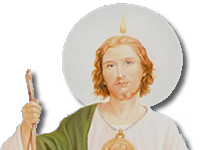



MARONITES
Who are they? Where do they come from?
The Maronite Catholic Church, sometimes called the Maronite Rite, had its beginning in the city of Antioch, Syriac which was the first See of Saint Peter, where the disciples were first called Christians (Acts 11:26).
From Antioch, Saint Peter went to Alexandria and then to Rome, where he was martyred and then buried on the Vatican Hill.The name "Maronite" is derived from Saint Maron, a holy priest and monk who lived in the vicinity of Antioch and who died in the year 410 AD. Saint Maron converted a pagan temple, ministered to the people of God along the Orontes River - south of Antioch in Syria, and performed many healings of body and spirit. After his death, a monastery was built with 800 monks living within its walls.
From the early centuries of the church, the Maronites abided by the precepts of the Holy Ecumenical Councils. Many among them were martyred for defending the teachings of the Ecumenical Council of Chalcedon and of Pope Saint Leo in the year 451. For many centuries the Maronites were the only Christians in the east who were in complete communion with our Holy Father the Pope in Rome and have always maintained that unity.
The Maronites looked constantly towards world Christian unity, despite the dissentions in the East among various Christian sects. They lived under the Byzantines for centuries but maintained their autonomous church and rite.
As the Arabization of the Middle East took place in the early 7th century AD., most of the peoples of the region were converted to Islam. The Maronites took refuge in Mount Lebanon to preserve their identity and faith.
For more than seven centuries, the Maronites withstood the onslaught by several dynasties, including the Umayyades, Abbassides, Mamelukes, and Ottomans. Lebanon became their homeland, which they defended fiercely along with other persecuted minorities. The Maronites cherished their church and spoke the Syriac language, a dialect of Aramaic which was spoken by Jesus, His Mother, and His Apostles. Syriac/Aramaic is still used in parts of the Maronite Liturgy.
In the 19th century, many Maronites emigrated to the west, particularly to the United States. Seeking both freedom from oppression and economic opportunity, tens of thousands of Maronites joined lawful and hard working emigrants in America.
In 1966, Pope Paul VI appointed the first Maronite Bishop for the faithful of the United States. Now there are two Maronite Diocese, called Eparchies, in the United States -- The Eparchy of Saint Maron of Brooklyn, Eastern USA, and The Eparchy Our Lady of Lebanon Church, Western USA.

